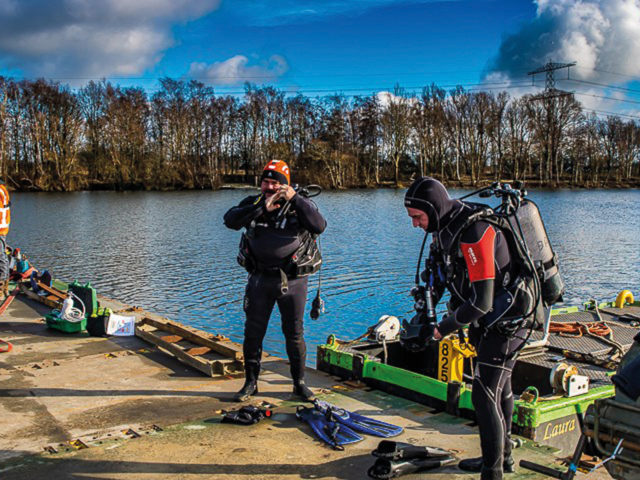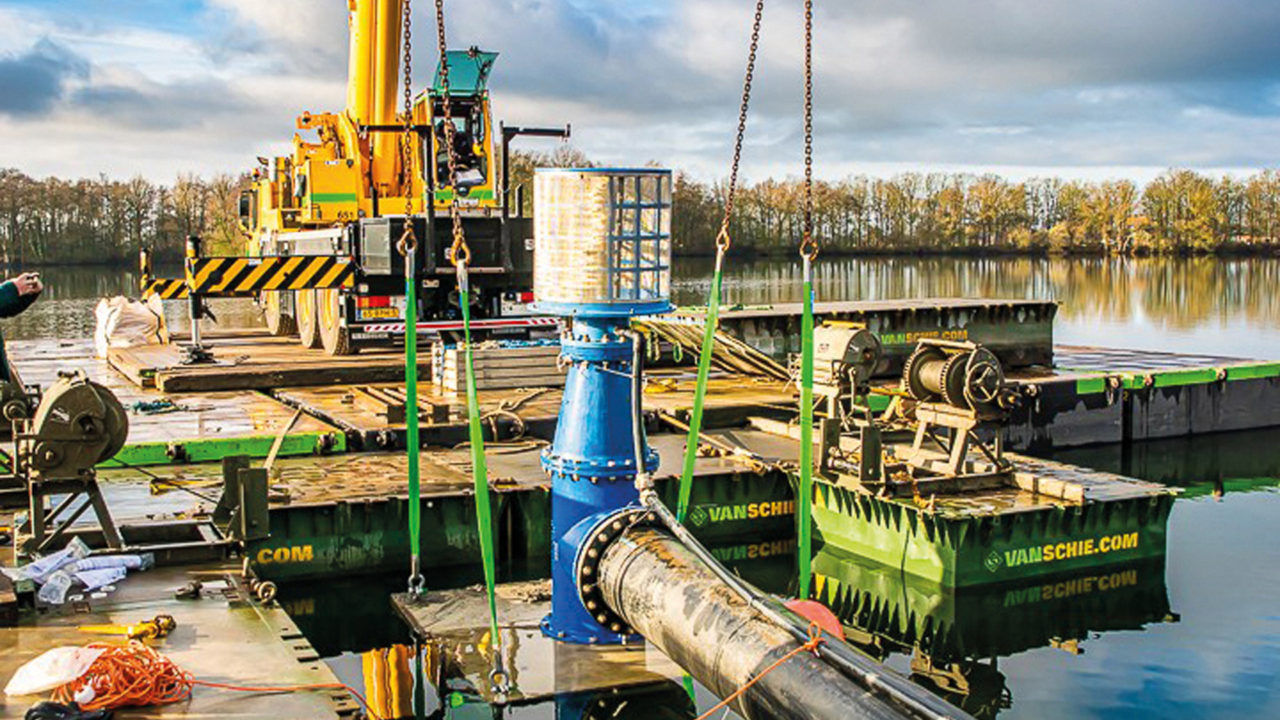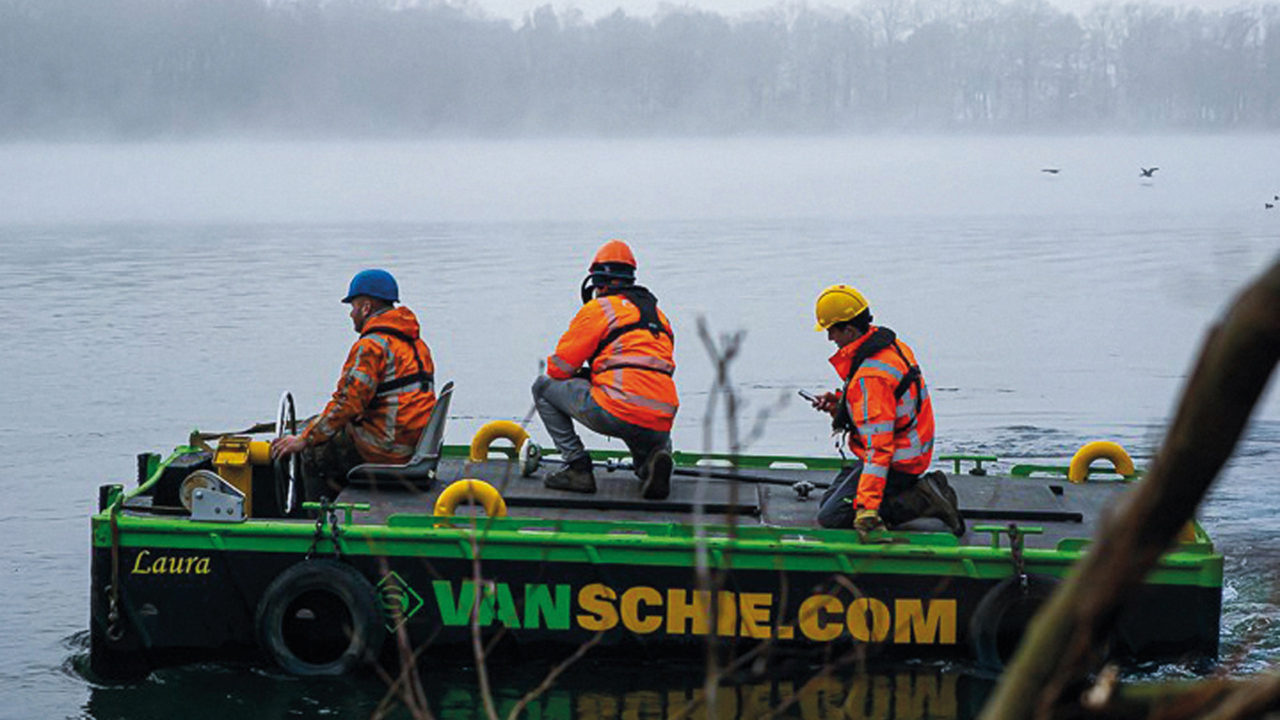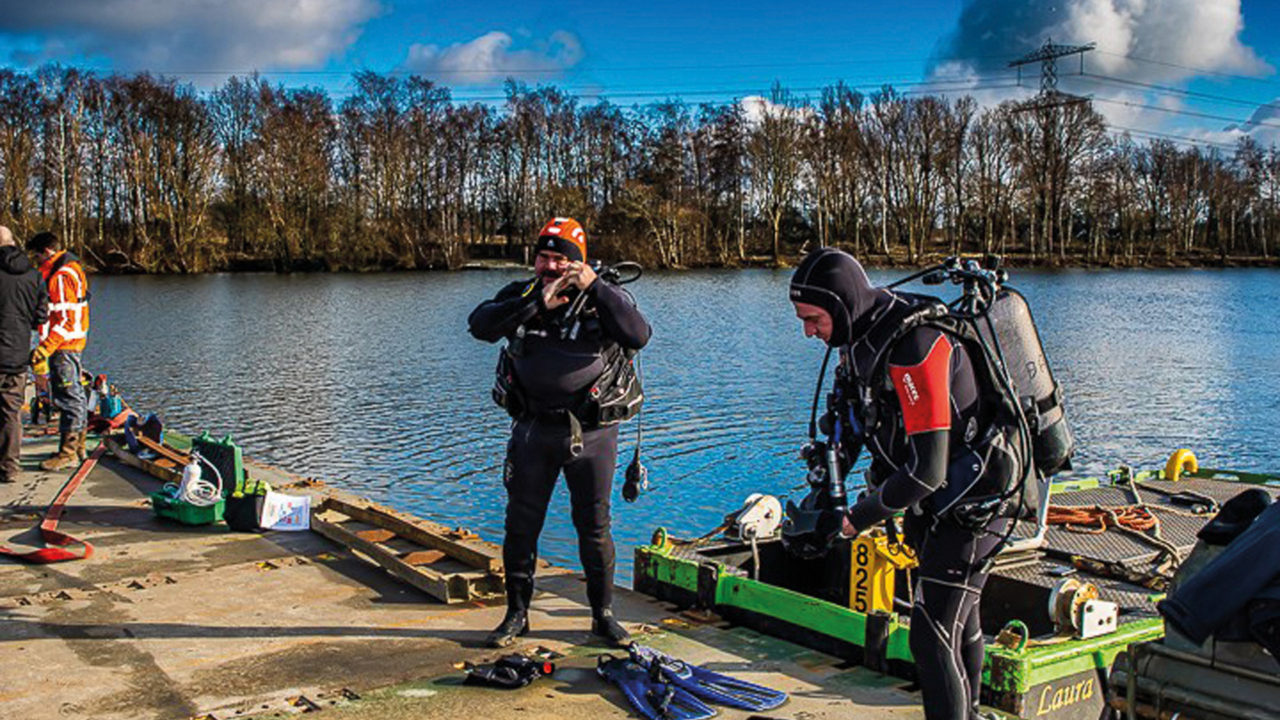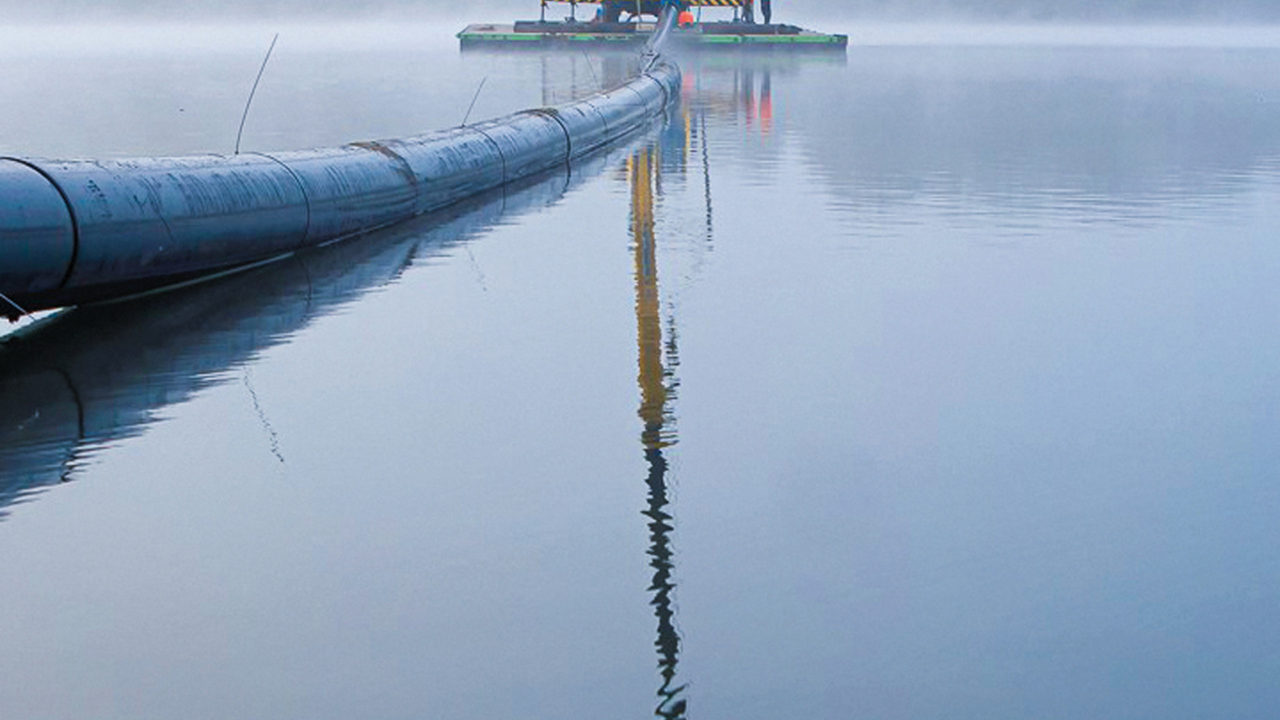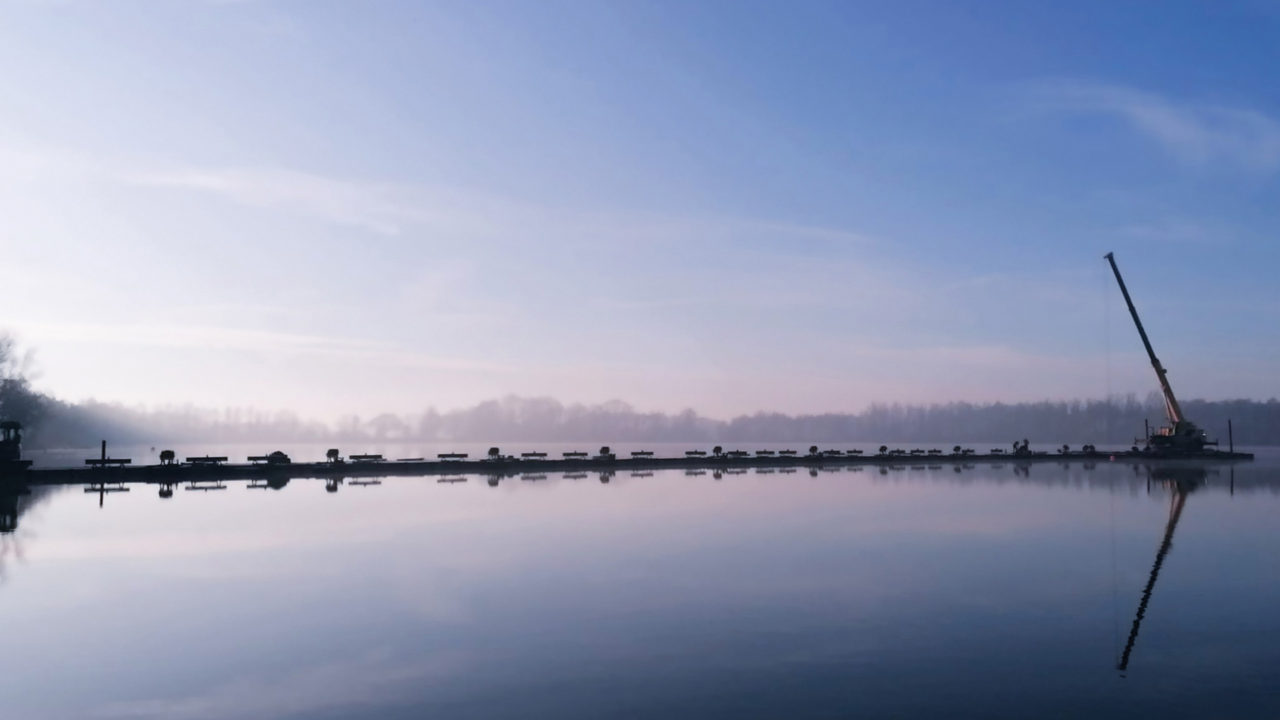Sinking the intake line to the bottom did not seem on paper to be the most difficult job. The heavy squeegee with basket would easily sink to great depths due to its weight, and the pipe automatically filling with water would automatically follow. But sometimes nature doesn’t cooperate.
Some air entered the pipe and the buoyancy was so great that the pipe partially floated. The heavy intake basket, which had sunk quite a bit, had to be resurfaced.
Van Schie was called in and solved it with a telescopic crane from a pontoon island. But tethering underwater was possible only by divers. Fortunately, the Royal Navy was willing to provide them.


